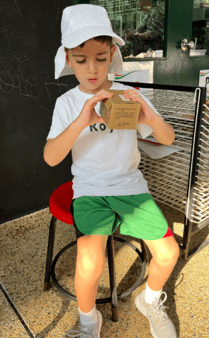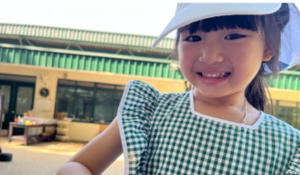The outdoor provision at Alice Smith provides children with a range of opportunities to explore the natural world, follow their interests and challenge them to take risks within their play. However, despite the children in early years thoroughly enjoying their outdoor area, the educators within the setting noticed that many of the children were using the outdoor space as a secondary learning environment instead of viewing both spaces as enabling them to access all areas of their learning.
In particular, the children within the year group were displaying a lack of connection to nature. The children expressed a dislike of getting muddy and dirty and would not engage with the various elements and insects within the outdoors. For example, one day the educators decided to put mud in the mud kitchen instead of the usual water. This change to their provision prompted the children to either steer clear of the mud kitchen, express how it was dirty or explain that they were ‘not allowed’ to play with the mud.
The educators within early years strive to provide the children with a wealth of opportunities to explore the natural world around them because playing, learning and having fun outdoors helps to improve wellbeing and resilience, as well as physical and mental health and also provides children with the opportunity to develop a life-long appreciation of the natural world (Macleod 2020 as cited in D’Acosli & Hunter). Sunlight and movement can increase serotonin levels in the brain helping to regulate emotion and mood. Playing in the mud can make us happy, as the soil contains the bacteria mycobacterium vaccae and can trigger a release of serotonin, ‘the happy hormone’ (D’Acosli & Hunter). Our children are inheriting a world that is more fragile than ever. It is our responsibility as educators to ensure that our children have a respect for, and responsibility to, the natural world. In Alice Smith Reception, we hope to lay the foundations for our children to become guardians of their fragile world.
These observations sparked a discussion amongst educators to see how the team could support this area of the children’s learning. We decided to help reconnect the children to their immediate outdoor environment. Some approaches we have taken are creating a vegetable patch, hunting for insects, building homes for creatures outside, map-drawing of the natural areas, leaf identification and rubbing, and observational drawing of the natural world, bringing insects into the classroom for further investigation.
Our children are inheriting a world that is more vulnerable than ever. It is our responsibility as educators to ensure that our children have a respect for the natural world around them. In Alice Smith Reception, we hope to lay the foundations for our children to become guardians of their fragile world.
Examples of Impact:

One of our children found a lizard hiding inside a tyre. As the children lay on their stomachs, trying to catch it in their hands, the gecko did its best to escape. The children were in turn warning each other to leave it alone - “It doesn’t want you to catch it! It belongs in nature”, and overcome by curiosity and an urgent need to trap it, to take a closer look. The adult managed to catch the gecko and a child ran to get something to keep it in, to prevent it from running away. He came back with a box from the outdoor junk modelling collection and the gecko was placed inside. While the teacher went to find a more suitable container for the gecko. He was entrusted with being the gecko’s safekeeper. He has little experience with the natural world, having grown up in city apartment blocks with their well-maintained yet wildlife-scarce gardens. He held the box tentatively. “I was a little bit scared”, he said afterwards. “I had to find my ‘lion inside’”.

Another child found a snail in the jungle area bordering our outdoor space. She was curious to see how it moved its feelers in and out, as well as being drawn to its beautiful shell. However, she was not keen to touch it, saying it was ‘dirty’ and ‘has germs’. The adult explained that it was not dirty, it just needed to live in dark, damp, muddy places. The children were interested to talk about why this might be, discussing how it needs to hide from predators and keep itself cool in the hot, tropical sun. The adult picked up the snail and held it in her hand. Much conversation followed, and the children observed how it moved, feeling its way and stretching out its body. She felt brave enough to touch the snail, poking its tiny tentacles and squealing with excitement as they responded to her touch. She was gently encouraged to hold it herself. “It feels tickly!”
Miffy Lawrence and Simy Hayes
Reception Class Teachers


